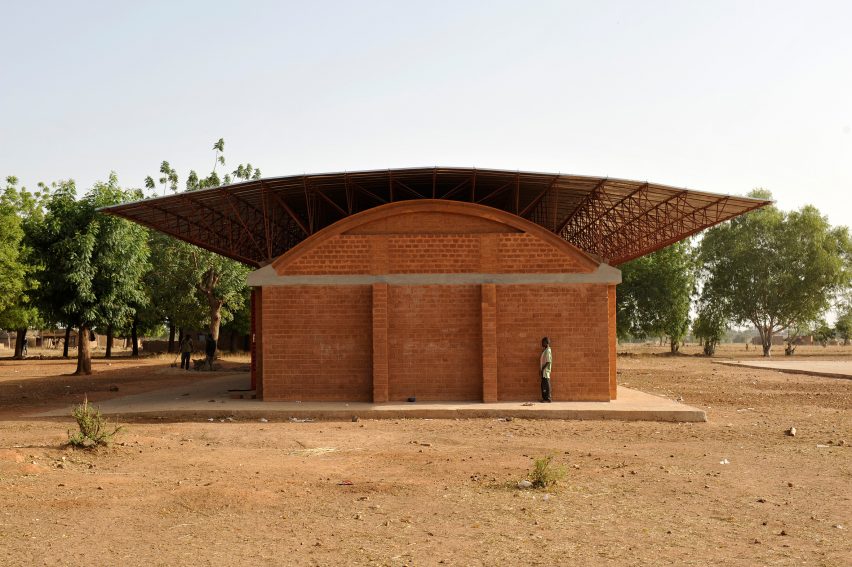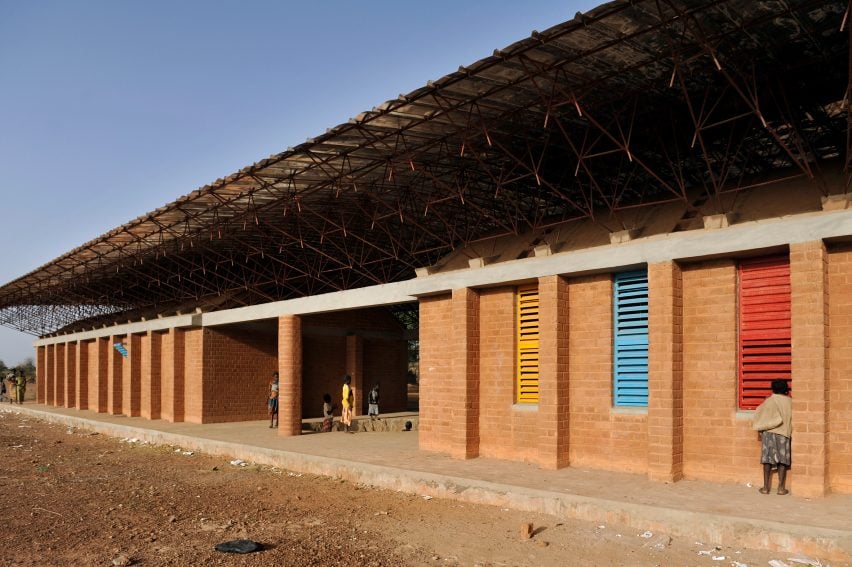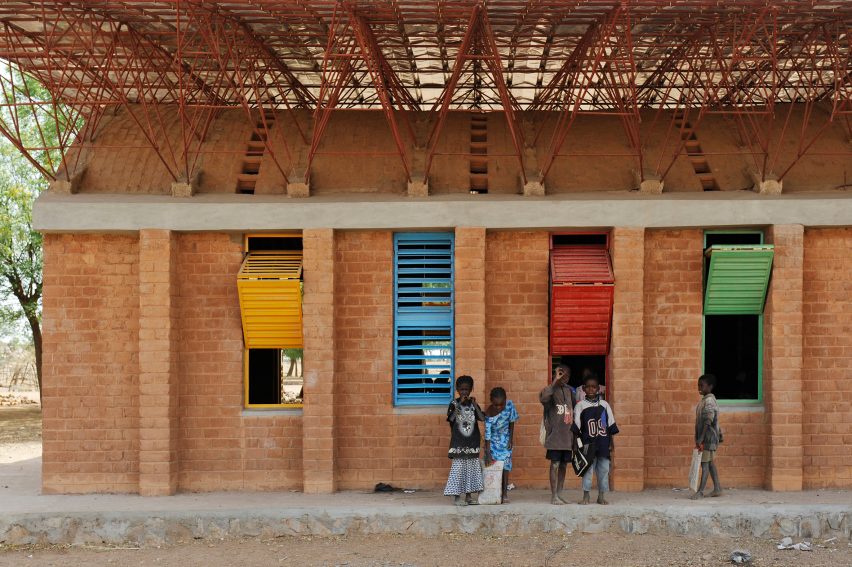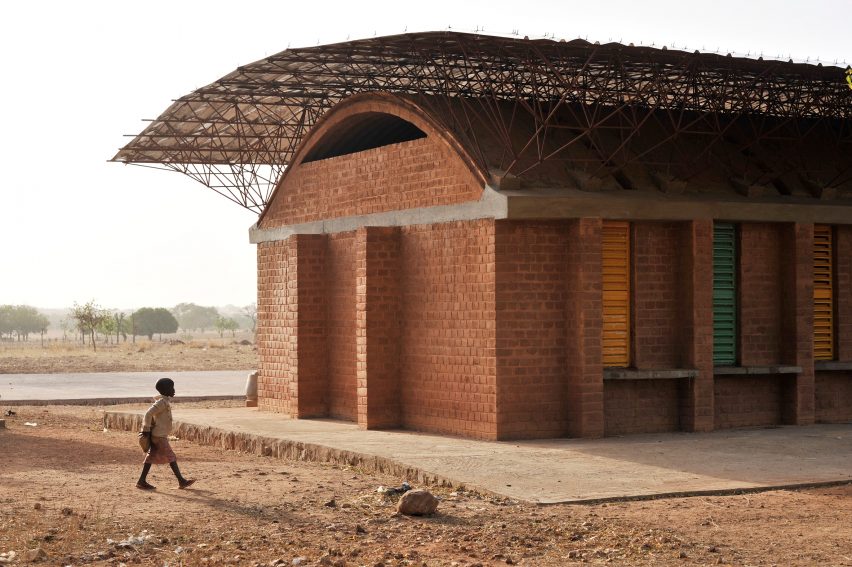Diébédo Francis Kéré says school that launched his career is "not a traditional African building"
In this exclusive movie produced by Dezeen, Serpentine Pavilion architect Diébédo Francis Kéré reveals how building a school for his home village in Burkina Faso was the starting point for his career.
Kéré was born in a village named Gando, a village on the east side of the African country. While studying to become an architect in Germany, back in 2001, he embarked on a building project for the place where he grew up.
"In my culture everyone has to put his path to push the community forward, so I started to build a school," he explains in the film.

Kéré was the first son of the head of the village, who allowed him to attend school as a child – although this was very rare. By building Gando Primary School, Kéré made it possible for any child in the village to receive an education.
It was his first ever architecture project, and set a precedent for a style of architecture that combines traditional building techniques with modern engineering methods.
"I did a modern building that is not westernised, and not a traditional African building," he explains.
He says his aim was "to create a building that responded the best to the need of the climate and the need of the people, using the most available material".

Kéré spoke to Dezeen following of the launch of his Serpentine Pavilion in London – an oval-shaped structure with a slatted timber roof, designed to represent the tree that was a meeting place for Gando residents.
While that building is primarily formed of wood, Gando Primary School is largely built from clay, as this material is cheap and readily available in Burkina Faso.
Kéré experimented with a clay and cement hybrid that was durable enough to withstand the high temperatures of the semi-arid environment.
"We tried to improve the quality of clay, adding some cement to make it attractive, to make it innovative," he says.

Burkina Faso sees heavy rainfall during the wet season, so traditionally buildings in feature corrugated tin roofs that overhang to keep the water out. However, in the dry season, the metal makes the interiors intolerably hot.
By using clay bricks, Kéré was able to avoid this, to keep the inside of the school cool. A ceiling of perforated bricks helps naturally ventilate the building, while the suspended roof directs the rain away.
"[We created] a well ventilated structure, which is working without any artificial or mechanic climate control," he says.

Having drawn up the plans, Kéré worked closely with the villagers to help with the construction. He also set up the Kéré Foundation to help fund construction.
"In the village no one could build. What I had to do was train the people to be part of the building process," the architect explains.
"Building with the labour of the community, I could do something big with less financial means, which is important for a project such as this."

The use of locally sourced materials and simple technologies helped to keep the costs down. As a result, Kéré has since developed on a number of extensions to the school, allowing it to increase its capacity.
"It was a big success," says Kéré. "We built a school in this time for 200 kids. But soon after, more kids wanted to attend education so we had to build an extension, and we also had to build housing for the teachers."
As the project grew, so to did Kéré's burgeoning reputation.
"One thing makes another thing happen, so we started to build a lot in the village. Then, people started to discover my work. People started to ask me to do the same for them," he adds.

In 2004, the primary school was awarded the Aga Khan Award for Architecture – an award that recognises architecture with a social responsibility.
Kéré went on to found his Berlin-based firm Kéré Architecture, which takes on projects across Africa and Europe, ranging from a Camper retail space at the Vitra Campus to Burkina Faso's new National Assembly building.
"Today in 2017, 16 years after building the first school, I have a team of maybe 200 to 300 builders, welders, carpenters, bricklayers, a lot of people working on different sites in Burkina Faso," he says. "This is incredible."
Photography by Erik-Jan Ouwerkerk.